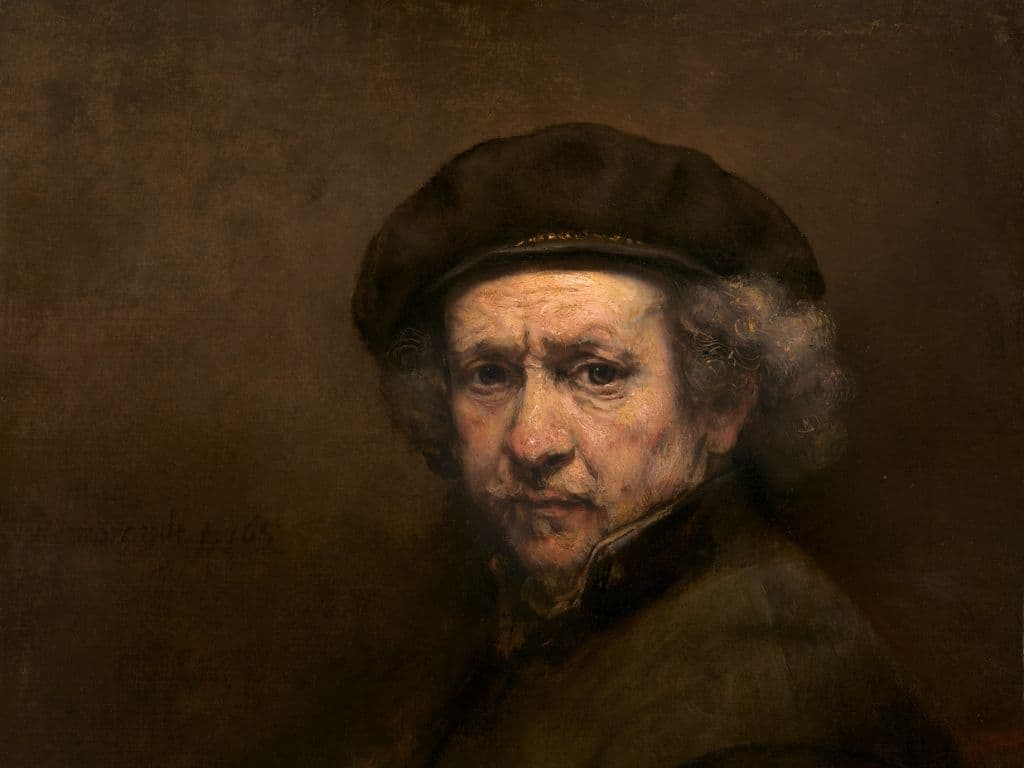It’s always interesting to look at the various movements in art and see how they interact with each other. It seems, for instance, that every time there’s a movement that focuses its intentions on stark realism, often the next is a rebuke of that. That’s certainly the case with the Baroque movement.
Is Rembrandt Baroque? Rembrandt is Baroque. Rembrandt Harmenszoon van Rijn is widely considered one of the foremost painters of the Baroque movement. The Baroque movement, and Rembrant’s work, in particular, was defined by themes of Catholic revival and realism.

Rembrandt was often referred to as one of the best storytellers of the history of art, his paintings often reflecting historical and Biblical imagery. In this blog, we’ll discuss Rembrandt’s importance to the Baroque movement as well as look at some of the main tendencies of the movement.
Is Rembrandt Baroque?
It would seem obvious to most art snobs that if someone asked, “Is Rembrandt Baroque?” that they clearly did not know much about the era or movement. A better question might be whether or not Rembrandt was a renaissance artist, as there are some that make that argument.
Rembrandt lived in Leiden, which is now known as the Netherlands. In a letter to a friend, he best defined what his work attempted to do. Rembrandt said through his art he hoped to reach “the greatest and most natural movement.”
Rembrandt was especially known for his natural gift to tell a story, often composing entire scenes out of images the way a photographer would.
This is in line with much of the Baroque movement, which had support in the form of the Catholic church. The church approved of the movement’s realism and felt it had the power to inspire further devotion from its followers
As such the church would often act as the movement’s patron. Many baroque artists contributed to the movement’s Biblical canon, including Rembrandt. His paintings, the Sacrificing of Isaac and The Blinding of Samson are just two such examples. It’s not hard to contrast them with Van Gogh’s Starry Night.
Though the Baroque movement extended beyond painting, it was a style that included architecture, dance, music, sculpture and other arts as well. It was a cultural movement that was encouraged by the church.
What are the Two Tendencies of Baroque Art?
Counter-Reformation
In the 15th century, the Catholic church felt a genuine threat from the Protestant reformation that began after Martin Luther’s famous day in 1517. Essentially, the moment he nailed the note to the door, the church felt the need to defend itself.
The Council of Trent was formed in 1545, and resolved to take on a more propagandist tactic. They believed faith in the church existed and could be revitalized through an emotional appeal to its devout. In art, that meant many images taken directly from passages of the bible.
The images were brought to life by artists like Rembrandt, who were often praised for their ability to create expressive, emotive works. The paintings are almost always very realistic, with their subjects more concerned with grand, religious concerns.
Interest In Nature
Interestingly, Rembrandt and other Baroque artists were also heavily influenced by their natural settings as well as the new discoveries in science and medicine. One of Rembrandt’s most famous works, The Anatomy Lesson of Dr. Nicolaes Tulp, depicts one such scene.
What Rembrandt Best Defines The Baroque Period?
Though some might choose his Biblical scenes, Rembrandt often showed more devout religious themes in works you’d least expect. As such, the aforementioned The Anatomy Lesson of Dr. Nicolaes Tulp might best explain his style and that of the period.
Though it is indeed an image of an anatomy lesson, performed in a doctor’s office, the emotion in the work is almost incongruous. The positioning of its subjects also gives some Christlike allusions, as does the dramatic lighting of the scene.
The corpse being painted under examination was that of a convicted and executed criminal. The doctors observing him were the Amsterdam Guild of Surgeons.
That we are able to have such information at our disposal is another marker of the period; the fact that it is documentary and realistic is important. Place this painting alongside Rembrandt’s more religiously themed works, and it’d be hard to distinguish the styles or emotions.
This is the very nature of propaganda, to make the unnatural seem natural.
Where Can I See a Rembrandt?
For the most comprehensive collection of Rembrandt paintings, the Rijksmuseum in Amsterdam houses most of his works. However, if you’re stateside, The National Gallery of Art in Washington, D.C. also holds some of Rembrandt’s works.